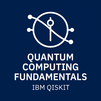
Elevate your programming skills with our Advanced IBM AS400 Application Development Course. This curriculum is tailored for developers who wish to deepen their understanding of AS400's integrated application environment. Learn advanced techniques in ILE, service program creation, and API utilization. Through detailed lectures and practical lab exercises, participants will develop, deploy, and maintain scalable applications, integrating modern functionalities into legacy systems for enhanced operational efficiency and innovation.
IBM AS400 Interview Questions Answers - For Intermediate
1. What is SQL/400?
SQL/400 is a specialized version of SQL for the AS400, allowing users to manage databases using SQL. It supports data manipulation, definition, and control commands tailored for AS400 environments.
2. How are devices managed in AS400?
Devices in AS400 are managed through configuration descriptions, which define the properties and capabilities of each device connected to the system, including terminals, printers, and disk drives.
3. What is a data area in AS400 and its use?
A data area in AS400 is a small storage space used to store data that can be accessed and shared by various programs. It is commonly used for sharing global variables or system settings across applications.
4. Can you explain commitment control in AS400?
Commitment control in AS400 is a feature that supports transaction integrity. It ensures all parts of a transaction are completed successfully before committing the changes to the database, allowing for rollbacks if needed.
5. Describe how batch jobs are managed in AS400.
Batch jobs in AS400 are non-interactive jobs that are processed in the background. They are managed through job queues, where they can be scheduled and prioritized according to business rules and workload.
6. What are the types of libraries in AS400?
In AS400, there are several types of libraries, including system libraries, product libraries, current libraries, and user libraries, each serving different purposes and containing different types of objects.
7. How do you handle error handling in AS400 programs?
Error handling in AS400 programs is typically managed through structured exception handling mechanisms like *MONITOR and *ON-ERROR, which allow programs to gracefully handle exceptions and continue processing.
8. Explain the role of the QSYS library in AS400.
The QSYS library is the primary and essential system library in AS400, containing all system objects, programs, and data critical for system operations.
9. What is the significance of the job scheduler in AS400?
The job scheduler in AS400 is used to automate the submission of jobs based on defined schedules. It helps in automating routine tasks and optimizing system resources.
10. How does AS400 support internationalization and localization?
AS400 supports internationalization and localization through features like CCSID (Coded Character Set Identifier), which allows it to handle various character sets and data formats for different languages and regions.
11. Describe the Master Job Queue in AS400.
The Master Job Queue in AS400 is responsible for handling all initial job processing requests before they are distributed to specific job queues based on their processing requirements.
12. What are some common commands used in AS400?
Common commands in AS400 include CRTLIB (Create Library), DLTF (Delete File), WRKUSRPRF (Work with User Profiles), and STRSQL (Start SQL), among others.
13. How does AS400 handle data replication and redundancy?
AS400 handles data replication and redundancy through features like mirroring and disk clustering, ensuring data availability and disaster recovery.
14. What are control groups in AS400, and what is their function?
Control groups in AS400 are used to manage and control batch processes, particularly during system backups, enabling structured and orderly processing of groups of objects.
15. Explain the importance of system values in AS400.
System values in AS400 are settings that control how the system behaves and are crucial for system security, performance, and operational characteristics. Adjusting these values can fine-tune the system to meet specific operational needs.
IBM AS400 Interview Questions Answers - For Advanced
1. Discuss the implications of adopting open-source technologies on AS400 systems.
Adopting open-source technologies on AS400 systems can significantly enhance the system's capabilities and flexibility. Open-source applications like Apache, PHP, and Node.js can be installed on AS400, allowing businesses to develop and deploy modern web applications alongside traditional AS400 applications. This adoption supports a more agile IT environment conducive to digital transformation. However, it requires careful planning regarding system security, compatibility with existing applications, and potential impacts on system performance. Organizations must also consider the support structure for open-source technologies since it differs from the traditional support provided for AS400 systems.
2. What are the considerations for integrating AS400 with cloud services?
Integrating AS400 with cloud services involves several considerations to ensure a smooth and secure integration. Key aspects include network connectivity and security, where dedicated VPN connections or direct connect services can be used to securely link AS400 systems with cloud environments. Data synchronization methods and formats must be defined to ensure compatibility and integrity. Additionally, considerations around compliance with data governance and privacy standards are crucial, especially in industries with stringent regulatory requirements. Leveraging cloud services can bring scalability and flexibility to AS400 operations, enabling hybrid architectures that can dynamically adjust to changing business needs.
3. How does AS400 support disaster recovery planning?
AS400 supports disaster recovery planning through a combination of hardware and software features designed to ensure data availability and system operability in the event of a disaster. Features like disk mirroring, remote journaling, and high availability solutions like PowerHA are integral to a robust disaster recovery strategy. Additionally, AS400's support for detailed backup scheduling and management, including full system backups and incremental backups, allows organizations to minimize data loss and recovery times. Advanced disaster recovery planning involves regular drills, updates to recovery procedures based on changes in the IT landscape, and continuous monitoring of backup processes and systems to ensure readiness in the event of a disaster.
4. Describe the process of performance tuning in AS400.
Performance tuning in AS400 is a systematic process involving monitoring, analysis, and optimization of system resources. Tools like Performance Tools and Navigator for i provide metrics and visualizations to help identify bottlenecks and inefficiencies. Common tuning actions include adjusting system values to optimize memory and processor usage, tuning SQL queries for better performance, and reallocating resources among partitions based on changing workload patterns. Advanced performance tuning may involve using machine learning algorithms to predict system load and automatically adjust resource allocations or configurations for optimal performance.
5. Explain the challenges and solutions for legacy application modernization on AS400.
Legacy application modernization on AS400 involves several challenges, including outdated user interfaces, monolithic codebases, and integration with modern technologies. Solutions often start with re-engineering user interfaces to web or mobile platforms using tools like IBM Rational, which allows existing business logic to remain in use while updating the front end. Refactoring monolithic applications into modular architectures can improve maintainability and scalability, allowing portions of the system to be replaced or upgraded incrementally. Integration challenges can be addressed using APIs and middleware solutions that enable communication between old and new systems, ensuring data consistency and extending the functionality of legacy systems.
6. What role does AI play in enhancing the capabilities of AS400 systems?
Artificial Intelligence (AI) can significantly enhance the capabilities of AS400 systems, especially in areas like predictive analytics, automation, and decision support. AI models can be integrated with AS400 to analyze historical data stored on the system to predict trends, identify anomalies, and automate routine decisions, thereby increasing efficiency and reducing human error. For instance, AI-driven chatbots can be integrated to handle customer inquiries or internal requests, freeing up resources for more complex tasks. Moreover, machine learning algorithms can optimize inventory levels based on predictive demand modeling, directly impacting business operations positively.
7. Discuss the steps involved in setting up a secure networking environment on AS400.
Setting up a secure networking environment on AS400 involves multiple layers of security measures. Initially, it requires configuring the system's integrated firewall to control inbound and outbound traffic based on predefined security rules. Implementing SSL/TLS for data encryption is crucial for protecting data in transit. Additionally, network access should be restricted using virtual private networks (VPNs) and secure shell (SSH) for remote access, ensuring that only authenticated and authorized users can access the system. Regular updates and patches must be applied to protect against vulnerabilities, and network activity should be monitored continuously using security information and event management (SIEM) tools to detect and respond to potential threats promptly.
8. Explain the concept of Object-Oriented programming support in AS400.
The AS400 system supports object-oriented programming (OOP) primarily through languages like Java and C++. This support allows developers to write and run object-oriented code on AS400, facilitating code reusability, easier maintenance, and scalability. The system's Integrated Language Environment (ILE) enables these languages to interact with traditional AS400 applications, allowing for a gradual integration of modern object-oriented designs into legacy systems. The incorporation of OOP principles helps organizations modernize their applications incrementally, aligning with current software development practices while leveraging the robustness and reliability of the AS400 platform.
9. How can AS400 systems be integrated with big data technologies?
Integrating AS400 systems with big data technologies involves leveraging connectors and APIs that enable data exchange between AS400 and big data platforms like Hadoop or Spark. This integration allows businesses to perform advanced analytics on data generated from AS400 applications, combining it with data from various other sources to gain comprehensive insights. Techniques such as data federation or ETL (Extract, Transform, Load) processes are commonly used to move data from AS400 to big data systems where it can be analyzed in conjunction with machine learning algorithms or deep learning frameworks to identify patterns, predict outcomes, and drive decision-making processes at a large scale.
10. What are the best practices for managing software upgrades and patches on AS400?
Managing software upgrades and patches on AS400 efficiently requires a structured approach to minimize disruptions and ensure system security. Best practices include maintaining a regular schedule for patch management, testing patches in a non-production environment to verify their compatibility and impact, and using automation tools to deploy patches across multiple systems simultaneously. It's also crucial to keep a detailed log of all changes for audit purposes and to have a rollback plan in case an update causes issues. Continuous monitoring for new vulnerabilities and ensuring that all software components are supported and regularly updated are critical for maintaining the system's integrity and security.
11. Describe the capabilities of AS400's audit journaling feature.
The audit journaling feature on AS400 is a powerful tool for tracking and recording system activities, providing a detailed log of events that can be used for security auditing, compliance, and troubleshooting. It captures information about database changes, system access, and other significant events. Administrators can configure what data is collected, tailoring the journal to meet specific security or regulatory requirements. This feature is essential for forensic analysis following security incidents, as it allows organizations to determine the scope of an incident and identify the root cause. Audit logs can also be integrated with external monitoring systems to enhance real-time security analytics and incident response.
12. How does AS400 handle database replication and failover?
AS400 handles database replication through Remote Journaling and Data Queues, which facilitate real-time data replication to a secondary system. This setup is crucial for failover scenarios, where the secondary system can take over almost instantaneously without data loss in the event of a primary system failure. Failover can be automated through high-availability solutions like PowerHA, which monitors system health and performs automatic failover to ensure minimal downtime. These capabilities ensure that businesses can maintain continuous operations, a critical requirement for mission-critical applications running on AS400 systems.
13. What are the challenges of integrating AS400 with modern cloud platforms, and how can they be addressed?
Integrating AS400 with modern cloud platforms presents challenges such as data compatibility, security concerns, and potential performance issues. These can be addressed by using middleware that acts as a bridge between the AS400 and cloud environments, ensuring seamless data integration and compatibility. Security concerns can be mitigated by implementing robust encryption, using VPNs for data transmission, and configuring cloud services to meet the organization's security standards. Performance issues can be addressed by optimizing the integration architecture, possibly using dedicated cloud resources to ensure that the performance metrics meet the system requirements.
14. Discuss the use of scripting on AS400 for automating administrative tasks.
Scripting on AS400, primarily through the use of CL (Command Language) scripts, is an effective way to automate repetitive administrative tasks such as system backups, user management, and report generation. Scripts can be scheduled to run at specific times or triggered by system events, reducing the need for manual intervention and minimizing the risk of human error. Advanced scripting can include error handling to manage exceptions during script execution and integration with email systems or other notification mechanisms to alert administrators about script outcomes or failures.
15. How do the AS400's built-in redundancy and fault tolerance mechanisms enhance system reliability?
The AS400's built-in redundancy and fault tolerance mechanisms, such as redundant power supplies, mirrored disks, and error-correcting memory, are designed to ensure continuous system operation and data integrity. These features automatically detect and correct hardware failures, preventing data loss and system downtime. Additionally, the AS400's architecture supports software-level redundancy through features like simultaneous multi-threading and workload capping, which enhance the system's ability to handle failures and maintain performance levels. This robustness makes AS400 particularly valuable for industries where system availability and reliability are critical, such as finance and healthcare.
Course Schedule
| Nov, 2025 | Weekdays | Mon-Fri | Enquire Now |
| Weekend | Sat-Sun | Enquire Now | |
| Dec, 2025 | Weekdays | Mon-Fri | Enquire Now |
| Weekend | Sat-Sun | Enquire Now |
Related Courses
Related Articles
Related Interview
Related FAQ's
- Instructor-led Live Online Interactive Training
- Project Based Customized Learning
- Fast Track Training Program
- Self-paced learning
- In one-on-one training, you have the flexibility to choose the days, timings, and duration according to your preferences.
- We create a personalized training calendar based on your chosen schedule.
- Complete Live Online Interactive Training of the Course
- After Training Recorded Videos
- Session-wise Learning Material and notes for lifetime
- Practical & Assignments exercises
- Global Course Completion Certificate
- 24x7 after Training Support







 Join our Live Instructor-Led online classes delivered by industry experts
Join our Live Instructor-Led online classes delivered by industry experts